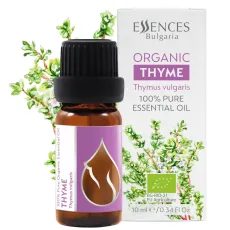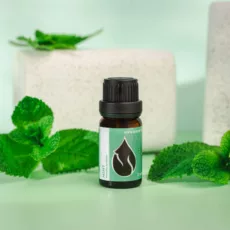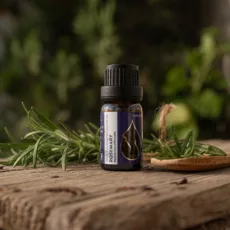Thyme

Common thyme (Thymus vulgaris), also known as babina dushitsa (“granny’s darling”), belongs to the mint family (Lamiaceae). Its flowers are small, red-violet, and borne in clusters in the axils of the upper leaves.
Native to the sunlit hills of the Mediterranean, thyme is an incredible natural gift for our health. The Greek name for thyme is “Thymus,” which is translated as strength and courage. The Greeks used the fragrant herb as incense in ritual sacrifices to appease the gods and to purify the air.
Legend has it that the tears of the beautiful Helen turned into aromatic thyme. After bathing, the ancient Greeks massaged their bodies with perfumed oils extracted from thyme and tossed sprigs of the herb into the fire, letting the fragrance rise to the gods with the smoke. In the Middle Ages people knew of the herb’s disinfecting properties and used it during epidemics of leprosy, cholera, and plague, throwing it onto bonfires. An essential oil is extracted from the aerial parts of thyme; its main component is thymol, which has bactericidal action. Thymol, together with other nonvolatile flavonoid antioxidants, increases thyme’s antioxidant capacity to such an extent that it ranks first on lists of antioxidant foods. Fresh thyme is an important source of vitamin C, while dried thyme provides calcium, manganese, and vitamin K.
Folk medicine uses thyme for colds, labored breathing, weakened cardiac activity, epilepsy, heartburn, headaches, nervous disorders, and insomnia. As a remedy, thyme helps with anemia and stimulates blood formation. Even today it is used to calm bouts of coughing—especially in flu, bronchitis, and colds—thanks to its antispasmodic effect.
Thyme has wide application as a seasoning, herb, and medicine. As a spice it is used to flavor game and fattier meats because it aids their digestion. Thyme is also used in the making of liqueurs.








